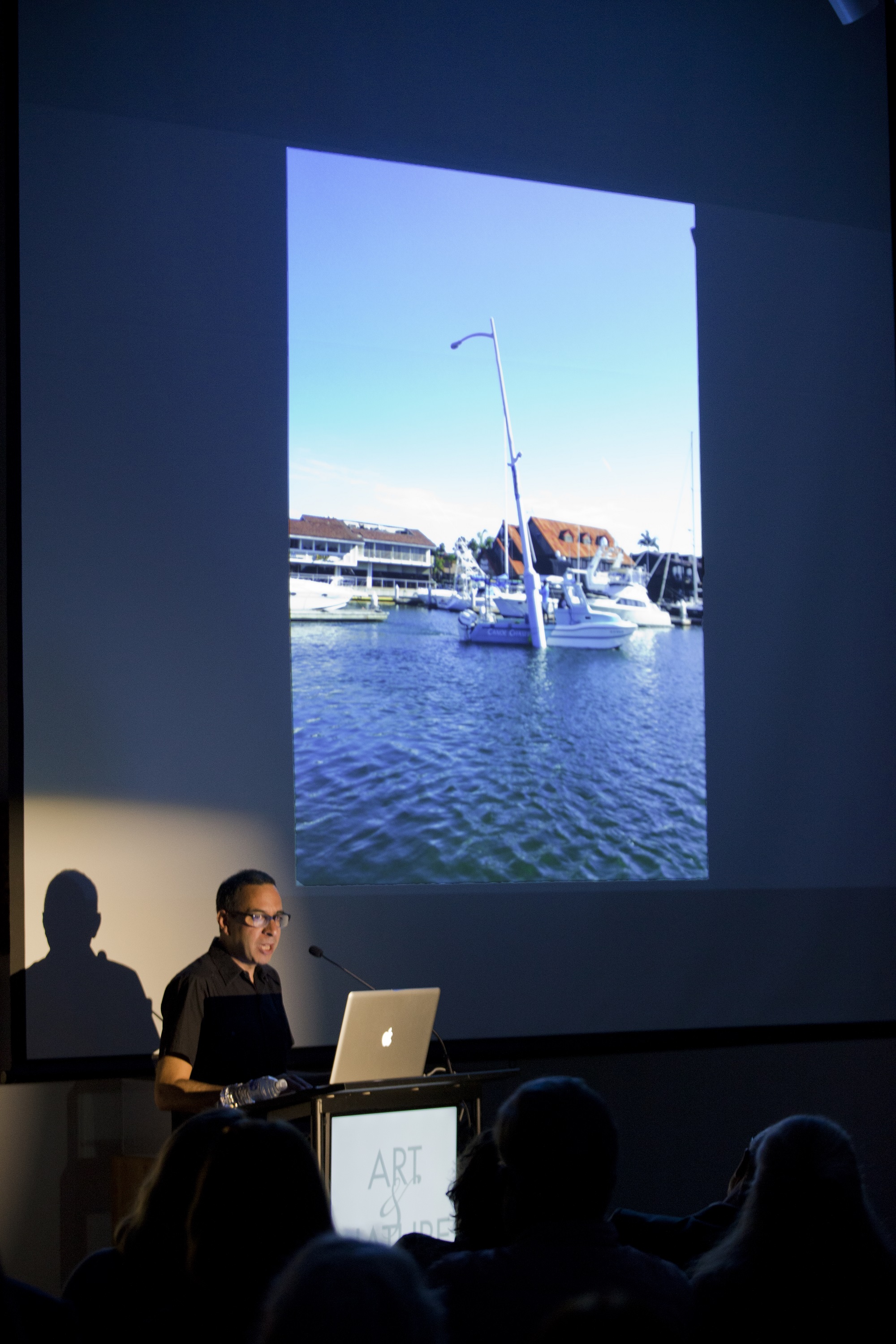By Andrea Adelson | NB Indy

— Photo by Eric Stoner ©
The floating light standard created for a temporary Laguna Art Museum exhibit at sea now remains tied up for the foreseeable future in Newport Beach, its installation halted by eleventh-hour environmental concerns raised by regulators.
Late last week, after consultation with the state Natural Resources Agency, California Coastal Commission staff directed the museum to hold off installing the piece while some environmental issues and concerns are addressed, the museum’s Executive Director Malcolm Warner said.
“The ball’s in our court,” Warner said Tuesday. “We need to work on understanding what we need to do,” he said, in order to allay reservations.
The streetlight art installation required 400 pounds of ballast to weight the buoy-like object on the sea floor offshore Main Beach in Laguna, which is within a marine protected area.
The artwork “Seascape,” commissioned for this year’s Art & Nature festival, was devised by Mexico City artist Pablo Vargas Lugo and was to be installed Nov. 2.
Racing boat engineers Morrelli & Melvin of Newport Beach, who executed the work, initially postponed installation by a day, deciding on an alternate vessel for transit.
Instead of a boat, the engineers thought a barge with a crane was better suited to safely hoist the 40-foot long Styrofoam shaft into the seas 200 yards off the Laguna Beach coastline. They set out again on Nov. 3, but reversed course at midday after regulators intervened, said museum spokesman Cody Lee.
Assuming museum officials can satisfy environmental concerns, Warner said he aims to see the floating light installed early in 2018 when the museum kicks off events marking its centennial year.
A Jan. 27 party seems appropriate, he said, as it will feature a preview of art work envisioned by Newport Beach artist Elizabeth Turk for next year’s Art & Nature event.
In the meantime, Lugo’s light remains tethered on a barge moored in Newport Harbor, Warner said.
The artist described the work in a museum presentation on Nov. 3. Its solar panels and battery are intended to spotlight a circle of sea and transmit images from a mounted camera of the illuminated “Seascape,” which would be viewed in the museum foyer. Lugo said he envisioned the lonesome light bobbing in the ocean as a means to tweak public perceptions about rising sea levels and the built environment.
Earlier, Warner had said, “Our view is we don’t need a Coastal Commission permit,” as the museum had already secured support from the city and received approvals from the Coastal Commission, the Department of Fish and Wildlife, and the U.S. Coast Guard.




